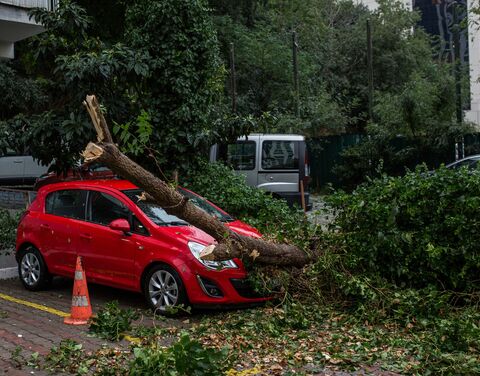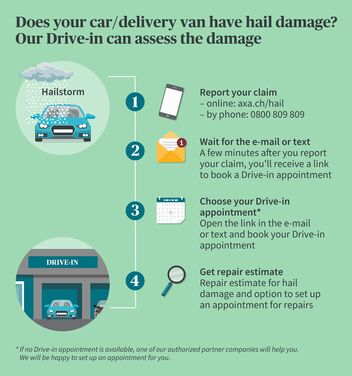
Heavy thunderstorms, hail and storms are causing major damage more frequently in Switzerland. We explain what you have to do if you suffer a loss event and which insurance policy pays for what kind of damage. Read our expert tips about these issues which are aimed at tenants, homeowners and businesses.
If a storm is brewing, it's advisable in the first instance to find more information about it. If the weather situation is unstable, media or apps with push messages give warnings quickly and precisely about storms, hail and heavy rain and/or thunderstorms.
If a storm is brewing, warnings and advice are given in the media. Those who follow them protect themselves and others. Here are the most important rules to follow:
If there is a risk that water could enter the building in a storm or during persistent heavy rain, store valuable items in a safe place or higher up. If the flood has already occurred, do not enter the affected rooms and areas, as this could be life-threatening.
If damage is caused by natural forces, such as high water, hail or flooding, then depending on the items affected, different types of insurance policies are responsible.
GUSTAVO cantons: Geneva, Uri, Schwyz, Ticino, Appenzell Innerrhoden, Valais, Obwalden
A natural event is essentially an unpredictable natural force that hits people and property with irresistible and sudden force. Nobody can be made responsible for this type of event.
In Switzerland, damage caused by natural forces, i.e. storm, hail, avalanche, snow loads, rock avalanches, landslides, falling rocks, flooding and floods, is closely linked to fire insurance. As nearly all buildings and contents are insured against fire, the insurance companies integrated automatic fire insurance against damage caused by natural forces. Due to this “enforced” solidarity, natural hazards which can vary a great deal regionally can be insured for a reasonable and standard price. The risk is distributed among more insured parties. This globally unique system has been shown to work. Without this solidarity, it would, for example, be almost impossible to insure against avalanche risk in a mountainous region.
From an actuarial perspective, the decisive factor in the event of flood or flooding is whether the damage was caused by natural forces or by water damage. This question has often led to differences about liability between insurers which is an extremely unpleasant situation for all those who are directly affected by any damage. An agreement has been in place for several years governing which insurance policy is liable and when in terms of buildings or furniture and installations. In general:
It therefore depends where the water came from.
If there have been major storms, we advise you to file claims online. The next steps will be decided depending on the situation: Cars that are no longer roadworthy are moved to a collection point for assessment. A claim adjuster visits the site whenever there is major damage to property and buildings. Many of the claims are dealt with by our staff from their office. The clearer the case is based on the documentation - i.e. lists and photos - the quicker it will be settled.
Hailstorms can cause immense damage, particularly to motor vehicles. AXA organizes a local drive-in whenever large hail events pass through. After booking a time slot, here is where you can quickly and easily stop by with your car or van to get an instant repair estimate.

"Storm and hail damage: cars, vans, motorcycles, etc." is where you can find more information on what you should do if your motor vehicle suffers storm damage.